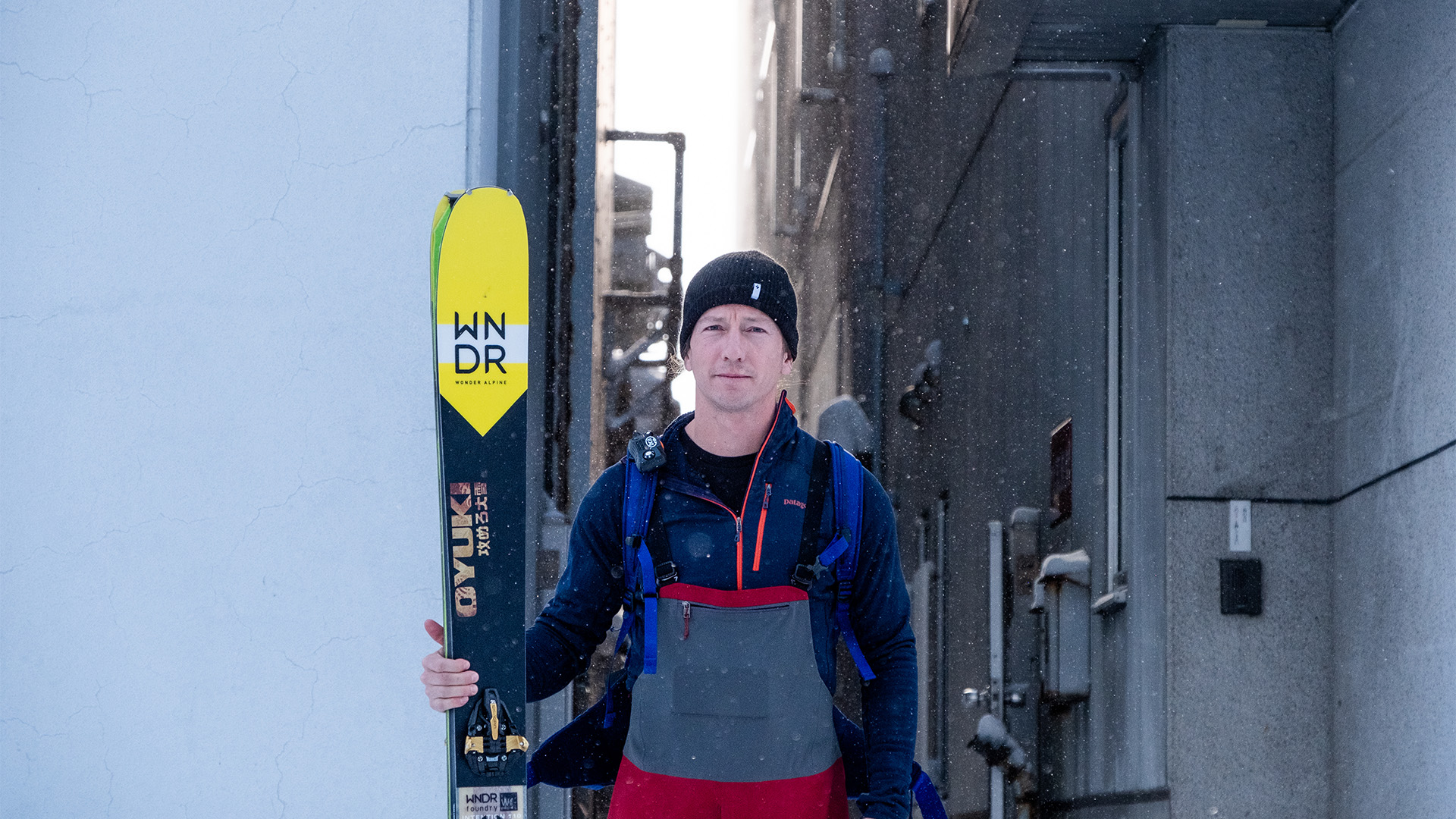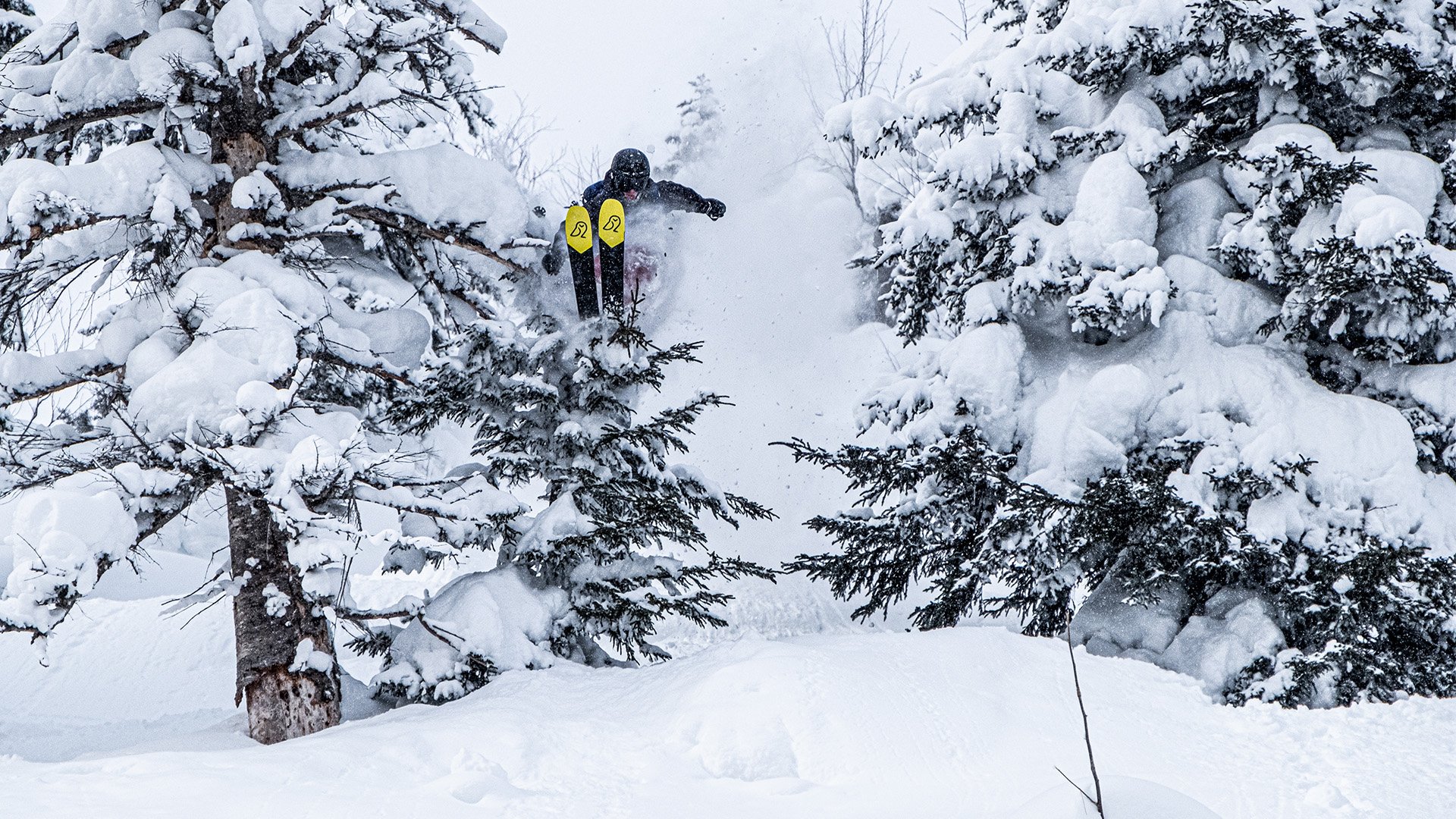Pep Fujas talks about ski company WNDR Alpine and the future of sustainable ski manufacturing.
Every year we get excited to see new products coming into the store. This year we have something special from the team at WNDR Alpine skis. These guys are driving innovation on and off the mountain by manufacturing the first truly sustainable ski.
WNDR Alpine was founded in 2018 by Matt Sterbenz who previously founded 4FRNT skis in 2002. He had the ambition of showcasing the technologies developed by parent company Checkerspot, a bio-manufacturing company engineering performance materials. They have been making noise in the industry and challenging the traditional manufacturing process in ski production ever since and the company is now the first industry B Corp certified ski manufacturer.
Shortly after founding WNDR Alpine, long time friend and legendary skier Pep Fujas came onboard. Initially testing the skis and fine-tuning the prototypes. Pep wanted a more hands-on role and is now Vice President of Marketing and Product Development. Pep is a Hokkaido regular with a bunch of trips under his belt, returning each year for the amazing blend of culture and consistent deep powder snow.
We have had the chance to catch up with him to get his thoughts on being part of WNDR alpine and why the skis are perfect for the amazing conditions synonymous with Hokkaido.

How long have you been involved with WNDR alpine?
I have now been officially involved since September 2019, just over two years. The winter prior I had bumped into Matt, caught wind of what he was up to and helped him test and provide feedback for some prototype Intention 110’s.
What is the link between WNDR and Checkerspot?
WNDR Alpine is an outdoor product-focused consumer brand of Checkerspot, a material development company. The materials created by Checkerspot are derived from microalgae oil, which is less carbon-intensive to produce than any other oil on the market, therefore better for our environment. These materials are created with the end-use application in mind, in our case, skiing. There is great value in working directly with Checkerspot to create our own material. We can tune the characteristics of the material to suit our specific needs and we have a direct line of sight into our supply chain.

How does it feel to be so involved with the development of not only the ski design but also the use of new technologies?
I absolutely love it! Helping to design skis that I want to ride while collaborating with scientists and engineers in-house is great. I’ve always wanted to do what I can to influence positive change in the world and whilst travelling the world skiing is self-fulfilling and inspires others to be more connected with our natural world, the environmental impact is substantial. To have the opportunity to help develop new technologies that have the ability to reduce our collective environmental impact is amazing. Although the technology is being launched using skis, and snowboards in the near future, it can be utilized in lots of different industries. Our Algal Wall polyurethane for example is 68% bio-based, which is 68% better than other polyurethanes. Imagine if all the polyurethanes in the world were made in the same way? That would result in a substantial reduction in petroleum usage and carbon footprint. It really feels good working for a company that fundamentally cares about how it does business.
Congratulations on the B corp cert, what does it mean for the company to be the first manufacturer in the industry to receive this recognition?
In my opinion, B-Corp certification is the most notable designation we have received and I truly hope others can follow our lead. Manufacturing is inherently a dirty business that creates a great deal of waste, but B Corp certification goes well beyond how our products are made, used and disposed of. The certification looks at how well a company balances its profits with its purpose. The fundamental purpose of business is to enhance the human experience yet many businesses value profit over purpose. Being the first ski manufacturer to achieve third-party verification that our business activities reflect our ethos helps show we are walking the walk, not just talking the talk.

The intention 110 is an amazing do-it-all ski, what part of the design allows it to perform in such a variety of conditions and terrain?
I can attribute the Intention’s versatility and predictability on a few factors, including dimension, weight and technology. We dialed in the taper of the tip with the sidecut and rocker profile so the ski isn’t hooky yet when you get it on edge, it’s still powerful. Think of it as power on demand. The algal core coupled with the algal wall, increases damping to reduce vibrations caused by the interaction between firm conditions and wood characteristics. The mid-range rocker profile allows the ski to get through unpredictable terrain without deflecting. Having a mid-fat 110mm width creates a stable platform that can glide in powder with ease but also offers the confidence to engage and disengage the ski on demand.
How did the intention 110 perform on your last Japan trip and was there anything that surprised you?
I actually didn’t bring the Intention 110 with me to Japan on my last trip, I had the very first prototype of the Reason120 with a retrofitted 110 graphic as that is what we had at the time. It was really the perfect testing grounds for the 120 given the plentiful amount of snow Japan receives as well as the terrain features. The terrain I was really excited to get into and test the Reason in was the tight trees that are native. The trees are very unique in that they have a great deal of wispy branches that require you to be very quick witted. To get through cleanly you need to be light on your feet and your skis need to respond quickly or else you’ll end up with a branch to the face. We experienced a variety of conditions from deep powder to sun soaked crust and I was really surprised with the variety of conditions and speeds it could handle. We made a few modifications to the final version including a slight increase in the rocker profile and an increase in taper in the tips. Now that those changes have been made, I’m really itching to get back to Japan!

Any recommendations on the camber vs rocker choice for skiing in Japan?
Personally, reverse camber. Camber vs Reverse is really a personal choice and dependent on your preferred skiing style. I think the rocker is slightly more versatile and I mostly ride reverse camber skis in all dimensions because they allow you a few extra dimensions to how you can approach different terrain. Camber is great if you are going to do more resort riding and stick to groomed slopes but reverse adds more playfulness and allows for more creativity. I think there is a general misunderstanding that reverse camber skis in general are slippery. Granted, if the reverse camber is drastic, you will have a much smaller sweet spot. But if the reverse camber is subtle like ours then you have a lot more freedom and control. There’s no right answer, just get out and try them both!
BUY INTENTION 110
BUY REASON 120

At Rhythm Japan we have been fortunate enough to have had the WNDR Alpine Intention 110 on test the last two winters. It has proven to be a real staff favourite due to its versatility and ability to perform in a variety of conditions. From touring days in the local backcountry zones and scoring deep pow to resort laps at Grand Hirafu in mixed conditions the ski has been reliable and great fun. One of the most impressive features has been the accessibility of the ski and how a number of different ski abilities have been able to use the ski and enjoy the ride.
The Intention 110 and Reason 120 are available in-store and online for purchase while stocks last and demos are available in our Niseko location.
The post Sustainable Ski Manufacturing With WNDR Alpine Skis appeared first on Rhythm Japan.

